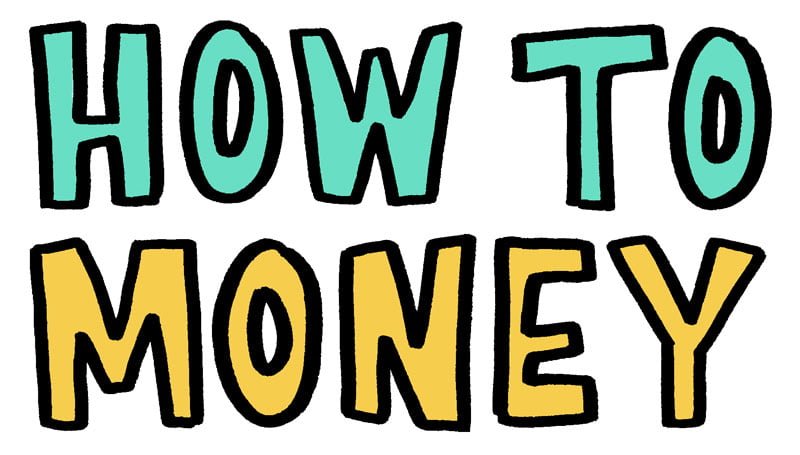The concept of determining needs vs. wants is something we all struggle with. Needs are things that you cannot live without, such as having a roof over your head and food to eat. Wants are items that are desirable but not essential, such as entertainment or tech gadgets.
As we budget, it’s important to make room for both needs and wants. Spending too much (or too little) in either category could lead to an unhealthy and unbalanced lifestyle. Let’s define needs and wants a little more clearly, and talk about ways to find balance in your life.
Needs vs. Wants: An Important Difference
Once upon a time…folks only bought what they could afford. The younger generation reading this might be challenged to grasp the concept of layaway. This is what most Americans used when they couldn’t afford the full price of an item. They would make payments on the item and then take it home AFTER it was paid for in full. Sounds quaint, right?
Now, with a simple swipe of a piece of plastic, the item you desire can instantly be yours. And by the time it’s paid for, not only will you often have shelled out more for it (thanks to interest), you might not even have or use the item anymore either. The easier it is to get that item the less we tend to value it.
This is why – now more than ever – it’s really important to understand the difference between needs vs. wants in your life. Some purchases may appear to be necessities but are actually desires you can live without. They might be nice to have, but they certainly aren’t a prerequisite for your happiness.
Identifying Needs
Expenses that fall under the “needs” bucket should involve items required for basic life survival. People struggle with the question, “Do I really need it?” What you really need is food on the table, shelter over your head, clothes on your back, a job, and a way to get to and from your job. Those are the basic needs.
Common needs include:
- Housing
- Transportation
- Food
- Utilities
- Insurance
- Healthcare/medical
- Basic clothing
Determining Wants
Wants are everything beyond the needs list (including upgrades!). The wants are the fun part. Everybody wants to spend money on their wants. These are expenses that consumers choose to buy but can still live comfortably without.
Common wants include:
- Travel
- Entertainment
- Luxury clothing/jewelry
- Subscriptions/memberships (EX: Gym)
- Coffee/snacks
- Latest technology
- Eating out
- New car (instead of used)
Real-Life Example of Needs vs. Wants
In 2008, my wife went to a Toyota dealership and purchased a new Corolla. It’s now a 16-year-old car with nearly 200,000 miles on it. There is nothing wrong with the vehicle and it gets tremendous gas mileage. Yet, we constantly struggle with, “Should we buy a new car? The new Honda Pilot looks nice.”
Our Corolla is old and a base model. Despite being a four-door car, it’s not very roomy. And it doesn’t even have power windows or locks (GASP!). A list of all the features we don’t like about the car is easy to create. However, when we compare that to the idea of having a $700+ monthly car payment, reality sets in. Nothing drives better than a paid off car!
Top: Our 2008 Toyota Corolla valued at $4,000. Bottom: 2023 Honda Pilot Elite MSRP $52,380.
Although we want a new car, it’s truly not a necessity for our family. Knowing the difference between needs vs. wants in our lives gives us a huge financial advantage. Whereas most people may think they NEED a new car – my wife and I just saved $50,000 sticking with our old one. Easy peasy. That’s $50K we can invest or spend in more valuable areas of our lives.
Budgeting for Needs and Wants (50/30/20 system)
So, how can you begin incorporating needs and wants into your budget? Start by making a list of everything you buy – from toothpaste to car insurance. Then classify your purchases into broad categories such as toiletries, cable, phone, and insurance. After that, split the categories into two buckets: needs and wants.
For example, insurance and a basic cell phone plan would fall under needs. But a Disney+ subscription and a deluxe cable TV package will fall under wants.
One budget method to consider helping you streamline all your expenses is known as the 50/30/20 budget system. By using this format your expenses will break down as:
- 50% spent on needs
- 30% spent on wants
- 20% allocated to savings/investing and debt repayment
50/30/20 monthly budget would look like this:
50% Needs:
- Rent
- Utilities
- Groceries
- Insurance
- Healthcare
30% Wants:
- Traveling
- New clothes
- Hobbies/entertainment
- Dining out
- Toys
20% Financial Goals:
- Student loan payment
- Credit card payments
- Auto loan payment
- Investments (401(k), IRAs, etc.)
The secret to budgeting is to become more aware of how you spend your money. This enables you to spend within your means while also ensuring that your spending is consistent with your values and priorities.
Dealing with Financial FOMO
We can always justify the spending in our minds when it comes to making a foolish purchase. Your brain will actually play tricks on you, attempting to disguise a want as a need. This is where behavior modification comes into play. Or as us money nerds might say, changing your money mindset.
Advertisers are shrewd at letting us know about things that we “must have.” And social media is packed with ads and posts that are designed to stoke discontentment in your life. Don’t fall for it.
Here are a few ways to avoid that financial FOMO:
- Opt out of social media, news, and advertisements. The more “noise” you consume, the more susceptible you are to buying excess stuff you don’t need.
- Audit your friendships and social circles. Having open and honest conversations with your friends about money will help avoid lifestyle creep and keeping up with the Joneses.
- Prioritize your future self. When people over exaggerate their needs, they usually rob from their savings budget. Instead, make savings/investing a priority in your life.
- Declutter, live with less, and focus on all the stuff you DO have (instead of the stuff you don’t) You’ll realize you can get by just fine without that.
Most of us have more stuff than we’ve ever had before. Don’t get tricked into thinking you need what everyone else has. You definitely don’t. And the reality is that the treadmill of unending wants never ceases. It’s perpetually moving, inclining you to continuously desire more, often leading to lower happiness levels.
The Bottom Line:
Regarding your budget, one of the most important steps you should take is categorizing your spending items by needs vs. wants. If you discover that the majority of your money is being spent on unnecessary wants, you may also be suffering from lifestyle creep. It’s a slick slope! Because the more you have in your life, the more you want and desire.
Before purchasing something, ask yourself, “Is this something I want or need?” Or “Is this purchase excessive?” Have you adjusted a percentage of your budget to account for lifestyle upgrades? Pausing and taking a moment to think before spending can provide clarity and help you prevent blowing your hard-earned cash on frivolous items.
Related posts:




